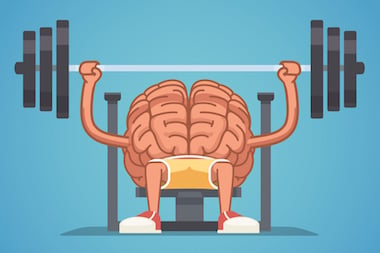Cognitive athletes: Why we need them, and how you can be one

To achieve the highest cognitive abilities, staff need a supportive strategy and a supportive workplace environment
For the sixth consecutive year, Advanced Workplace Associates (AWA) Workplace Week convention took place in London, drawing people together from a real wealth of different industries. The convention marked the culmination of a week of dynamic events aimed to extend the knowledge base of business, real estate and facilities leaders.
Calling on a number of renowned individuals to discuss the concept of the ‘cognitive athlete’, the day’s activities ranged from brainstorming how organisations can treat employees like cognitive athletes to lectures on innovations in office design.
While the day explored the theme from variety of perspectives, one key idea seemed to unite the thinking of all the delegates of the day: organisations cannot expect their employees to become cognitive athletes without the combined help of managerial strategy and supportive office environments.
People and place need to merge and connect in order to establish a successful workforce.
Align your organisational and personal goals
Jan Johnson, head of VP Design and Workplace resources at Allsteel, explored the need to respect that each worker is an individual asset; there is no one-size-fits-all in terms of how people like to work.
He said that we are slowly shifting towards a workplace culture based on trust: the days of micro-managing are fading and in its place we need to make sure that all employees are aligned with their organisations values and goals. AWA and Allsteel’s academic research found that supervisory support, and good interpersonal relationships make for a cohesive team of productive workers.
Innovate your office and simultaneously see your staff shine
The workplace week convention offered attendees the chance to understand how office design can actually affect employees in reality.
The relationship between office design and productivity is often the subject of many news articles. However, it can be difficult to understand the realistic benefits, without a case study.
Sally Sellers, head of HR at BSI, spoke at the convention and outlined just this. Trialling the scientific research and guidelines set out by AWA, BSI, the business standards company, restructured their entire office in the hope of improving attraction, employee productivity and wellbeing.
Through a physical reshuffle that involved moving the senior employees down whole floor levels to be closer to the rest of the workforce, in line with the overall flattening of hierarchies which are being implemented with the workplace revolution, the new office encouraged collaboration, and innovation.
BSI found that giving employees much more freedom and choice over where to work (a café, a chill out space, or a desk for example) actually led to employees becoming much more independent and engaged.
The staff there have taken ownership of their work styles, and have now taken their wellbeing into their own hands, starting yoga clubs, mindfulness classes and physical boot camp sessions.
The most important thing, according to Sellers, was the fact that people believe in the change. With the change in design came a chance for the organisation to restructure their values and embed their new corporate culture.
The workplace is a two-way street
Through an energetic interactive session whereby delegates split into groups to brainstorm how employers, employees and their facilities could enable everyone to work to the best of their ability, it became clear that becoming top class athletes needs to be a collaborative effort.
Education, leadership, design, worker-ship, technology, workplace management and services all play a vital role in helping us to reach our full potential. The workplace, rather than being a place lead by either designers or managers, needs to be a place that reflects the needs and desires of all who want to work well.

Press & Media Enquiries
For more information or to request interviews, contact CMI's Press Team on 020 7421 2705 or email press.office@managers.org.uk


